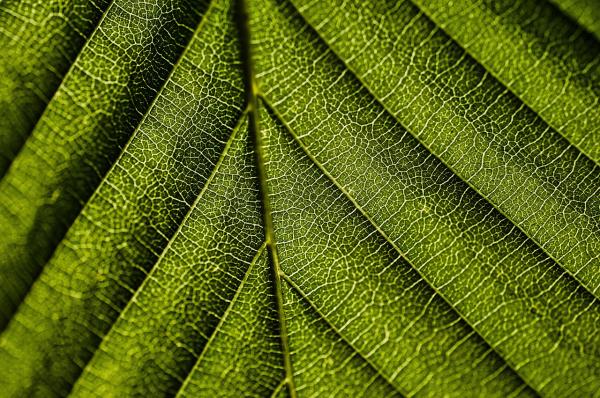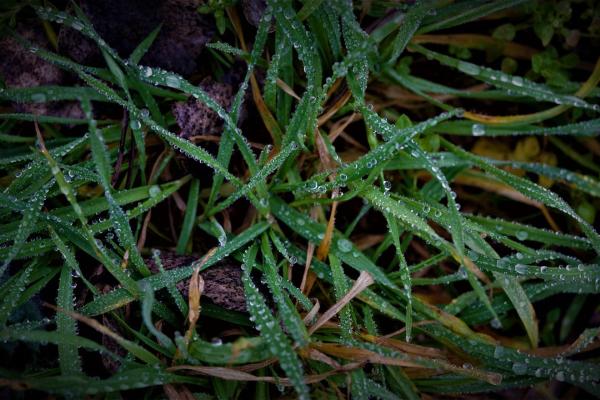Types of Chlorophyll and Their Function


Chlorophyll is something we learn about in school from an early age, but it can be difficult to grasp its true importance. This is clouded by the fact we have recently seen chlorophyll being used in culinary situations and other products, including chlorophyll gum. It may be difficult to reconcile these uses with the fact it is a naturally-ocurring pigment which allows life on earth to continue.
Since such confusion arises around chlorophyll, The Daily Eco helps to try to understand this substance by investigating the types of chlorophyll and their function. We provide a short definition of what chlorophyll is and how it works, as well as other fundamental aspects of this fascinating pigment.
What is chlorophyll?
The short definition of chlorophyll is that it is a type of pigment found in algae, plants and certain bacteria. There is no one type of chlorophyll, but different pigments which have specific uses. When present chlorophyll is responsible for giving plants their characteristic color, but its importance is not merely aesthetic. It is a biomolecule which is vital for life on this planet thanks to its involvement in the process of photosynthesis.
Chlorophyll only discovered in 1817. This was thanks to the French chemists Pelletier and Caventou. Pelletier was the one who designed and developed the methods that allowed the use of mild solvents to isolate both chlorophyll and many other substances of great importance in the medicine industry. These also include quinine and caffeine. The chlorophyll molecule is made up of hydrogen and carbon, plus a single magnesium atom in the center.
The green color is due to the fact that chlorophylls absorb visible light in both blue and red wavelengths, reflecting back in green. Due to this, the pigment has a characteristically intense green hue. It imparts this coloration to the organisms in which it is present. In other words, it can be said that the green color that we so commonly associate with nature would not exist without chlorophyll itself.
Most plants need warm temperatures and a good supply of sunlight to be able to produce chlorophyll. For this reason, when the cold months arrive and the plants temporarily lose their ability to continue producing chlorophyll, they lose their green pigment. The result is the exposure of other pigments already present in the plants, as well as others which may develop as a response to environmental change. It is this loss of chlorophyll which results in the characteristic oranges, browns, yellows and other tones we see in deciduous vegetation typical of autumn.
The function of chlorophyll in plants
Organisms capable of photosynthesis have chloroplasts. These are cellular organs which transform light energy into chemical energy through the process known as photosynthesis. Without chlorophyll, photosynthesis would not be able to function. These chloroplasts are located close to the cell wall in the cytoplasm. The pigments that allow photosynthesis are stored inside, surrounded by a colorless base.
The function of chlorophyll in plants is as simple as it is vital. They extract energy from the sun which is then converted into the chemical energy plants need to function. Thanks to the photosynthesis that chlorophyll makes possible, plants can transform the combination of water and carbon dioxide into oxygen and carbohydrates. In doing so, it allows plants to breathe and obtain useful energy.
Without chlorophyll, photosynthesis would not be carried out. Without photosynthesis, the plants would not survive. Without plant life on our planet, we would not have any other life. This includes us humans.

Types of chlorophyll
As we have mentioned above, there is not only one type of chlorophyll. Rather chlorophyll refers to a family of pigments. Here we look at the different types of chlorophyll and their functions:
Chlorophyll a
All organisms capable of photosynthesis contain this type of chlorophyll. This includes algae, plants and a type of bacteria known cyanobacteria. This is a type of gram-negative bacteria which is able to carry out photosynthesis and is the only bacteria to contain chlorophyll a. Chlorophyll a is present in chloroplasts. Thanks to its ability to absorb light from the visible spectrum, it enables the transformation of light energy into chemical energy.
Chlorophyll b
This type of chlorophyll also has a green coloration. Its function is to increase the light absorption capacity of chlorophyll a. Chlorophyll b is present in algae and trees.
Chlorophyll c
This type of chlorophyll can be found in some categories of algae, especially in the dinoflagellate group. Its function is similar to that of chlorophyll b, helping chlorophyll a to absorb sunlight, but it is only present in the initial stage of the photosynthesis process. It is reddish-brown in color and gives dinoflagellates their characteristic hue. A fun fact is that the Red Sea owes its color to the massive presence of these phytoplankton formations.
Chlorophyll d
This type of chlorophyll has only been observed in an isolated and inconsistent way in a red algae, although it was later also found in the cyanobacterium Acaryochloris marina. It is capable of exploiting the light from the red spectrum. It was recently discovered that their non-repeated presence on red algae is due to the fact that it is not the alga itself that produces it, but rather a cyanobacterium that develops subject to them.
Chlorophyll f
In 2010, a team from Australia led by Professor Min Chen's team published the discovery of a new type of chlorophyll, known as chlorophyll f. This was discovered in a cyanobacterium present in stromatolites in Australia and it absorbs red light more effectively than any of the other types of chlorophyll.

If you want to read similar articles to Types of Chlorophyll and Their Function, we recommend you visit our Facts about nature category.






